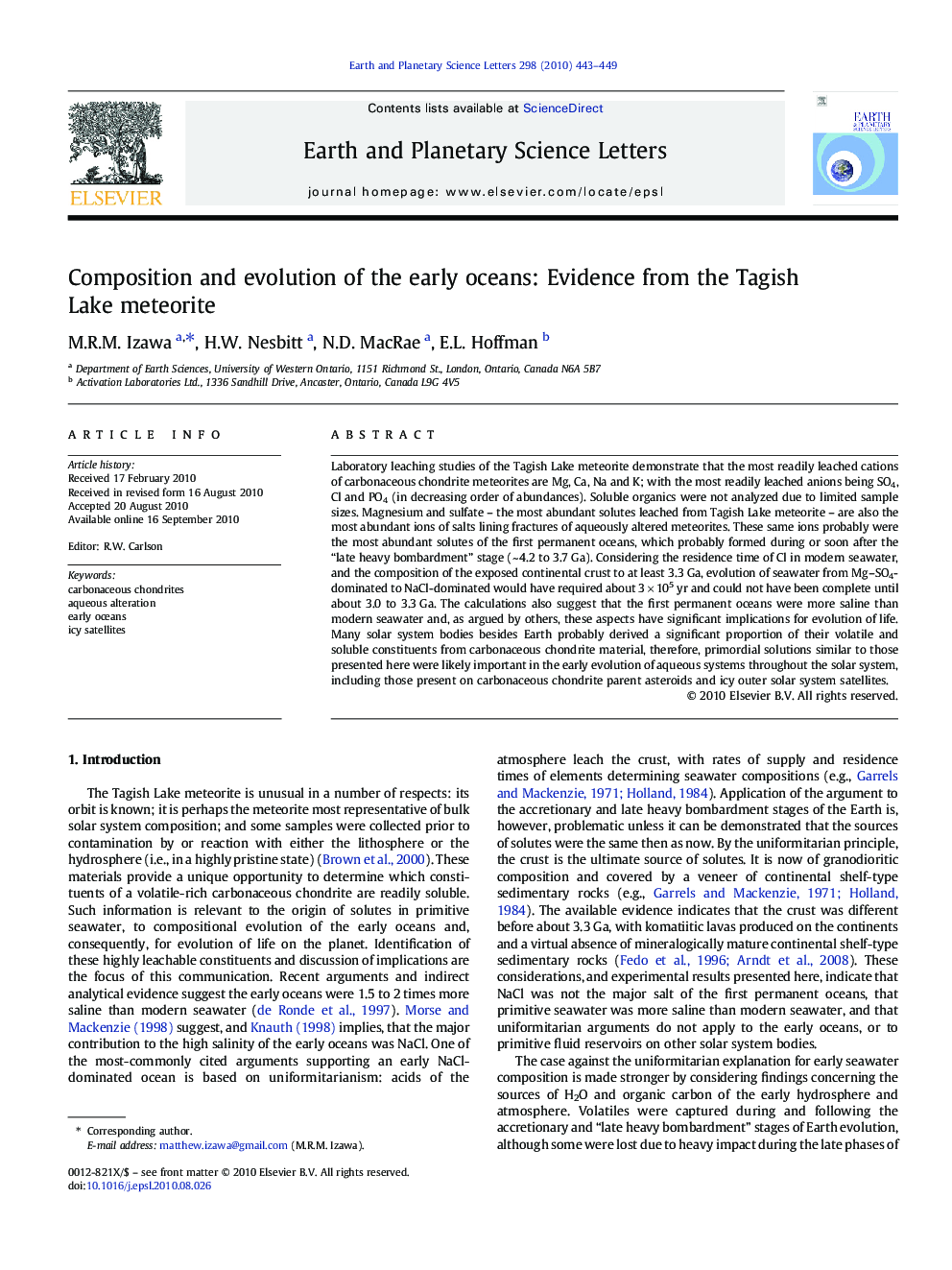| Article ID | Journal | Published Year | Pages | File Type |
|---|---|---|---|---|
| 4678421 | Earth and Planetary Science Letters | 2010 | 7 Pages |
Laboratory leaching studies of the Tagish Lake meteorite demonstrate that the most readily leached cations of carbonaceous chondrite meteorites are Mg, Ca, Na and K; with the most readily leached anions being SO4, Cl and PO4 (in decreasing order of abundances). Soluble organics were not analyzed due to limited sample sizes. Magnesium and sulfate – the most abundant solutes leached from Tagish Lake meteorite – are also the most abundant ions of salts lining fractures of aqueously altered meteorites. These same ions probably were the most abundant solutes of the first permanent oceans, which probably formed during or soon after the “late heavy bombardment” stage (~ 4.2 to 3.7 Ga). Considering the residence time of Cl in modern seawater, and the composition of the exposed continental crust to at least 3.3 Ga, evolution of seawater from Mg–SO4-dominated to NaCl-dominated would have required about 3 × 105 yr and could not have been complete until about 3.0 to 3.3 Ga. The calculations also suggest that the first permanent oceans were more saline than modern seawater and, as argued by others, these aspects have significant implications for evolution of life. Many solar system bodies besides Earth probably derived a significant proportion of their volatile and soluble constituents from carbonaceous chondrite material, therefore, primordial solutions similar to those presented here were likely important in the early evolution of aqueous systems throughout the solar system, including those present on carbonaceous chondrite parent asteroids and icy outer solar system satellites.
